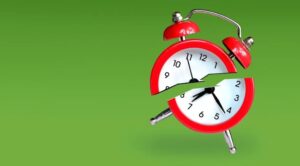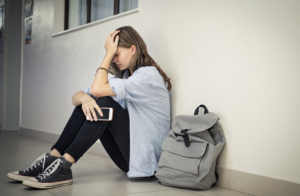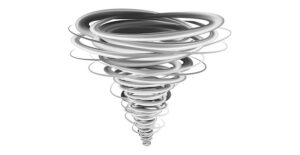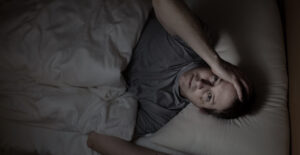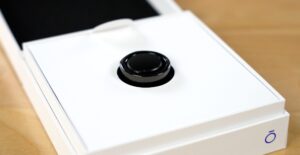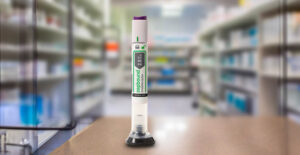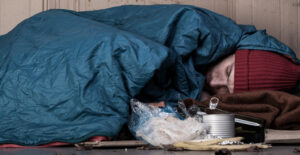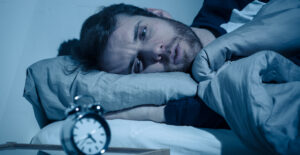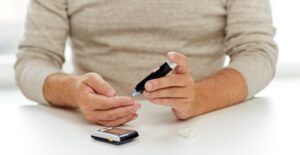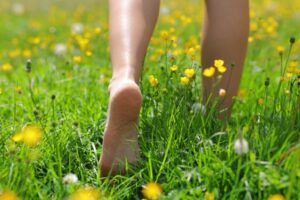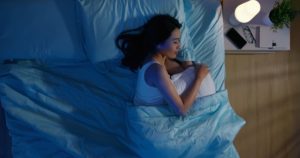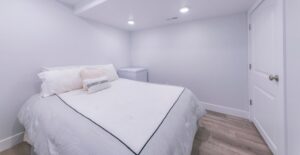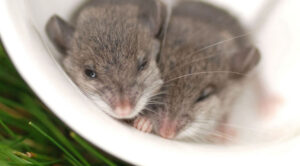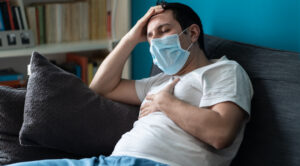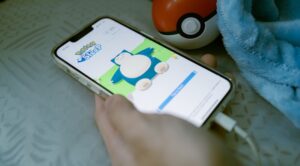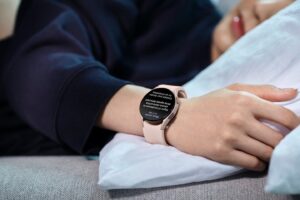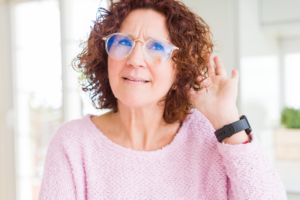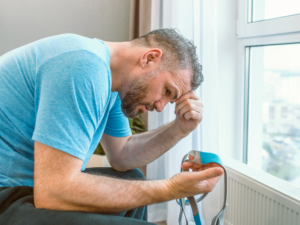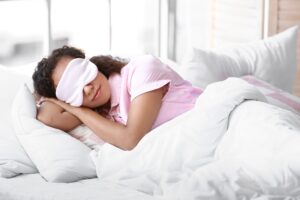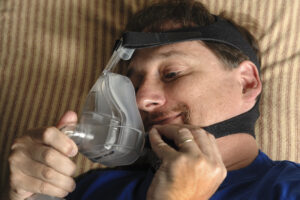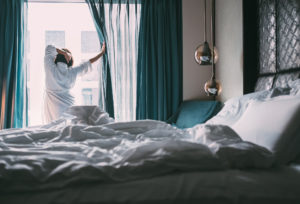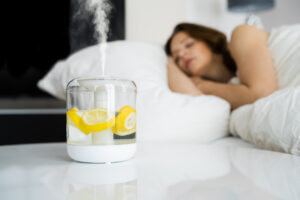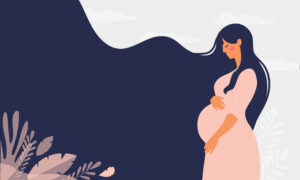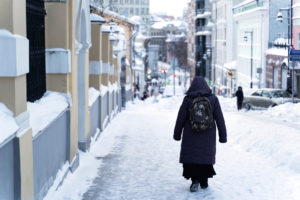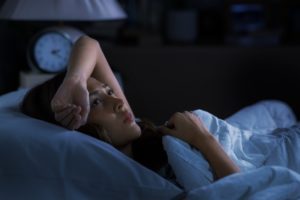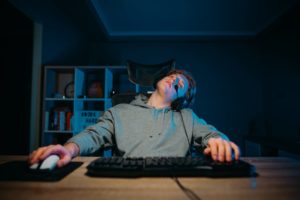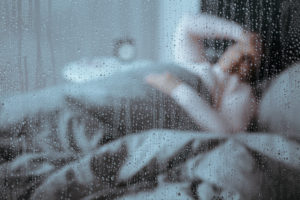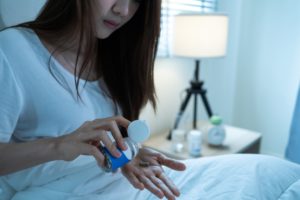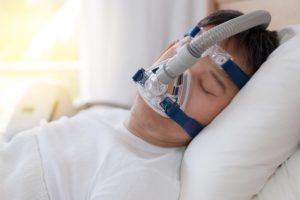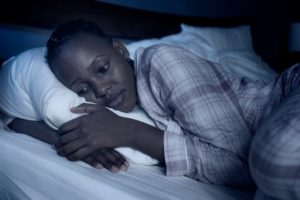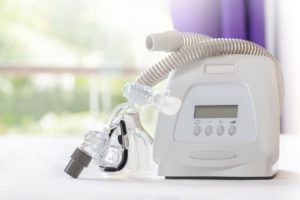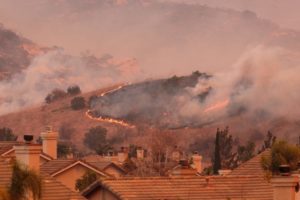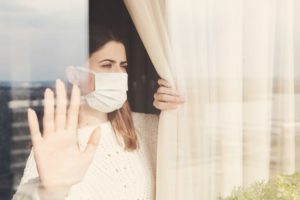Saving Lives and Losing Sleep? How Nurses’ Sleep Has Changed Since COVID-19

“The dream would keep me up.”
It usually would be a work-related nightmare, says Jacqueline Savalle, a certified medical-surgical registered nurse in Rochester, Minnesota. It usually came after just three or four hours of sleep. And it definitely started becoming a part of her sleep cycle in March 2020, when her non-intensive-care unit became a COVID-19 unit.
Savalle’s two-week night shifts grew from 60 hours to as many as 72. She’d get sleep in between. But it would be 16 to 20 hours at a time — oversleeping, on top of her sleep deprivation from bad dreams.
Neither is a healthy practice, which might be ironic for someone in a health care profession. But both irregular sleep habits have become more common for nurses since the outset of COVID-19. Part of it is the stress the pandemic has placed on nurses. They add COVID-19 health risks to their job of building relationships and trust with patients of all types, tending to their daily physical and emotional care, and reassuring worried family members.
A 2020 survey of more than 600 nurses found that 55% had insomnia, and 52% experienced anxiety.
Another factor is the profession itself, as nursing shifts of 12 hours or more are common and not conducive to “normal” sleep. Generally, nurses get about seven hours of sleep a night. That’s on the low end for the recommended sleep hours the average American receives.
But nurses have come to accept that sleep irregularity may come with the territory, says Terry Cralle, a registered nurse and certified clinical sleep educator who has advocated for sleep health and wellness for more than a decade. It may be a missed connection between sleep and health.
“They just don’t put two and two together,” she says.
The impact: Nurses who care for COVID-19 patients experience higher rates of burnout and fatigue compared to those working in non-COVID-19 units, research says.
A well-rested nurse will always provide better care than one who isn’t sleeping right, Cralle says. But balancing their duty of care with the need for sleep is a challenge for nurses that continues even at this stage of the pandemic.
Burnout, Staffing Shortages Only Made Sleep Worse
Even before the COVID-19 pandemic began, burnout was prevalent among nurses. A 2018 study of more than 50,000 U.S. nurses found that 31.5% left their jobs because of stressful environments and inadequate staffing. At least 80% said they were burned out or had unresolved job-related stress, with early pandemic-era studies hinting at a growing issue.
Then came COVID-19, which exacerbated a nursing shortage that was already expected to last into 2030.
It was enough for the American Nurses Association (ANA) to call the situation a crisis.
This job stress, plus the prevalent worry about getting sick or having a loved one fall ill, has contributed to poor sleep patterns. A 2020 survey of more than 600 nurses found that 55% had insomnia, and 52% experienced anxiety.
These are issues for all health care workers: Data from users of the Sleep Cycle app show that 39.1% of health professionals reported that it has taken them longer to fall asleep since the outset of the COVID-19 pandemic, compared to 35.3% of their peers in the general population. Of those health care workers, 81.7% said it took them more than a half-hour to fall asleep, far more than the typical 15 to 20 minutes.
Cralle says she hears it in nurses’ voices.
“The stress levels are huge,” she says, “and that’s obvious on a basic level.”
Shift work is always a challenge to getting sufficient quality sleep even in ideal situations, Cralle says.
“But when you add in mandatory overtime, coupled with staffing shortages because of COVID, we’re asking a whole lot of our nurses,” she says.
During COVID’s early days, nurses also faced shortages of personal protection equipment (PPE), with 45.5% reporting that they used an N95 respirator for at least three straight days — well beyond intended use. They also battled fears of bringing home the virus after completing a shift, or worse. The World Health Organization estimates that anywhere from 80,000 to 180,000 health-care workers died from COVID-19 between January 2020 and May 2021.
Two years into the pandemic, nurses are suffering from an emotional hangover, registered nurse Maureen Holtz says. She adds that her own colleagues have experienced post-COVID symptoms, often called long-haul COVID. Some have left the profession altogether. Others, like Holtz herself, moved to telemedicine.

Why is Nurses’ Sleep So Chaotic?
More working hours or more stressful work doesn’t necessarily mean less sleep for nurses. Registered nurse Holly Carpenter noticed this when helping to compile data points for the 2020-2021 Healthy Nurse, Healthy Nation (HNHN) annual report. HNHN is an enterprise program of ANA, for which Carpenter is a senior policy adviser.
Comparing statistics on thousands of nurses before and during the pandemic as part of the HealthyNurse Survey, HNHN found that the number of nurses getting at least seven hours of sleep daily actually increased by 3%.


Several reasons may explain why, says Carpenter, who is based in Silver Spring, Maryland. Nurses experiencing pandemic-related depression could be sleeping more hours; the survey also showed that nurses with depression increased from 14% to 16% during the pandemic, with anxiety disorder increasing from 16% to 20%.
Those laid off or able to work from home also may log additional sleep. Even so, more than one-third of nurses said they got six hours of sleep or less in a 24-hour period, according to the survey.
“It’s kind of difficult to make generalizations,” Carpenter says, “except to say it’s been very chaotic for nurses.”
As the owner of Eastern Utah Women’s Health, Danielle Howa Pendergrass knows this chaos all too well. For her, the pandemic disrupted all regular routines, affecting exercise, eating habits, alcohol consumption, and sleep. Her 10-year-old brick-and mortar business transitioned to telehealth to keep everyone safe.
A doctor of nursing practice and board-certified women’s health nurse practitioner herself, Howa Pendergrass had to figure out how to balance everyone’s needs while working from home.
“The stress of safely providing women’s health care through the adoption of telehealth, keeping everyone employed, and meeting the needs of my patients resulted in many sleepless nights,” she says.
Even as COVID-19 case rates subside, the work is still there. And for some nursing roles, the work may have increased.
Dianna Copley, a doctor of nursing practice and a clinical nurse specialist at Cleveland Clinic, says she fell asleep easily in COVID’s early days. But after each COVID-19 surge comes an extended game of catch-up.
“I find myself working a lot of additional hours and under additional stress,” Copley says. Nowadays, she finds it difficult to fall asleep and quiet her thoughts.
Powering Through on 1% Battery
Sleep is a biological need. But it’s the first thing that nurses sacrifice in their jobs, Cralle says.
Nurses will say, “I can power through it. I’ll get used to it by getting by on less sleep,” Cralle says. “Once we’ve got this group who are suffering from sleep deprivation, we’re going to have health problems, both psychological and physical, as well as patient quality-of-care issues.”
All you have to do is look at the research about patient errors and sleep deprivation, Cralle says. A 2020 study of 11,395 physicians found that sleep loss increased the risk of medical errors by anywhere from 53% to 97%. Similar research from 2014 drew a parallel between errors among nurses and lack of sleep, with 56% of nurses reporting being sleep-deprived.
“When you're sleeping for 20 hours a day because you're so tired by what you're doing at work, you don't have the energy to do anything else. It just shatters your mental health.” — Jacqueline Savalle, registered nurse
In practice, it starts with mental exhaustion at the end of a work day, says Roxanne Dunn, a registered nurse and traveling emergency services director in Southern Maine. She could fall asleep after a day of work at the height of the pandemic. She couldn’t stay asleep.
“I would, and still do, wake up around 2 a.m.,” Dunn says. “During 2020 and 2021, I would rarely be able to fall back to sleep, as my mind would be feverishly trying to come up with solutions to keep staff safe, happy, and motivated to return to work.”
Then there’s the oversleeping, as Savalle experienced.
“When you’re sleeping for 20 hours a day because you’re so tired by what you’re doing at work, you don’t have the energy to do anything else,” she says. “It just shatters your mental health.”
The cycle continues when nurses head back to work and potentially give patients advice that they themselves cannot follow. It’s perplexing, Howa Pendergrass says.
“I could talk with my patients all day about the importance of sleep hygiene,” she says. “But I could not do it myself.”
Health Systems Can Support Quality Rest
Cralle says she believes nurses would take sleep more seriously if hospitals and other health-care facilities continue to recognize and address the problem.
“If they realized the impact sleep has on job dissatisfaction, they’d wake up and think of ways to protect their nurses,” she says.
The ANA recommends that employers give nurses at least 10 consecutive hours of protected time off to get at least seven hours of sleep. Employers can also eliminate mandatory overtime as a staffing solution.
Simply allowing breaks and quality rest are equally important, Carpenter says.
“One of the nicest things an employer could provide is a restoration room, a place for nurses to relax, decompress, sip a refreshing drink, listen to calming music,” Carpenter says.
For teleworkers at Eastern Utah Women’s Health, Howa Pendergrass drew up guidelines to ensure quality sleep.
“As a team, we encourage healthy boundaries,” she says. Everyone agrees not to text or email between 5 p.m. and 8 a.m. Logging in “just to get caught up” after hours or on the weekends is strongly discouraged.
Meanwhile, organizations are taking lessons learned from the past two years of the pandemic to support good sleep for nurses. For example, major nursing associations have issued recommendations for managing sleep during intense work times such as during the COVID-19 pandemic. Copley’s employer, the Cleveland Clinic, has provided apps for meditation, physical fitness, and sleep.
“I could talk with my patients all day about the importance of sleep hygiene. But I could not do it myself.” — Danielle Howa Pendergrass, owner, Eastern Utah Women's Health
Throughout the COVID-19 pandemic, the American Hospital Association has shared community stories about health systems supporting their workers during COVID-19. Many hospitals have tapped into the need for rest and restoration, offering “zen” or “time-out” rooms or stress-management classes that focus on relaxation and mindfulness.
Cralle says she’d like to see the fundamental science behind sleep become common understanding for nurses: “I hope to see it more in the nurse curriculum. I also think sleep education should be part of every nurse orientation.”
How Nurses Can Improve Their Sleep
Cralle advises that nurses — or anyone requiring set sleep time — set clear boundaries. It can start at home. Say: “This is my sleep time, and I don’t want to be disturbed unless there’s an emergency.”
Savalle refocused her energy on positive changes, such as incorporating yoga and meditation a few times a week. Howa Pendergrass rediscovered the power of exercise. Dunn set an earlier bedtime.
Even talking to peers and co-workers can work, as was the case for Marlon Garzo Saria, a registered nurse and director of professional practice and advanced practice providers with Providence Saint John’s Health Center in Santa Monica, California. After speaking with a colleague, “I was able to clear my mind, reduce my worries and anxieties, and have a good night’s sleep,” he says.
The bottom line: It is hard to be productive when you are tired. For nurses, who lean on empathy, balancing sleep needs with the added stresses from COVID-19 have mostly made it harder to deliver that extra little “nursing sparkle,” Savalle says.
“It’s not that people aren’t being taken care of,” she says. “It’s just harder to go above and beyond for patients.”
References
16 Sources
-
Stimpfel AW, Sloane DM, Aiken LH. The longer the shifts for hospital nurses, the higher the levels of burnout and patient dissatisfaction. Health Aff (Millwood). 2012 Nov;31(11):2501-9. doi: 10.1377/hlthaff.2011.1377. PMID: 23129681; PMCID: PMC3608421.
https://www.ncbi.nlm.nih.gov/pmc/articles/PMC3608421/ -
Stimpfel, A. W., Fatehi, F., & Kovner, C. (2020). Nurses’ sleep, work hours, and patient care quality, and safety. Sleep health, 6(3), 314–320. https://doi.org/10.1016/j.sleh.2019.11.001
https://pubmed.ncbi.nlm.nih.gov/31838021/ -
Consensus Conference Panel, Watson, N. F., Badr, M. S., Belenky, G., Bliwise, D. L., Buxton, O. M., Buysse, D., Dinges, D. F., Gangwisch, J., Grandner, M. A., Kushida, C., Malhotra, R. K., Martin, J. L., Patel, S. R., Quan, S. F., Tasali, E., Non-Participating Observers, Twery, M., Croft, J. B., Maher, E., … Heald, J. L. (2015). Recommended amount of sleep for a healthy adult: A joint consensus statement of the American Academy of Sleep Medicine and Sleep Research Society. Journal of Clinical Sleep Medicine, 11(6), 591–592.
https://pubmed.ncbi.nlm.nih.gov/25979105/ -
Sikaras C, Ilias I, Tselebis A, et al. AIMS Public Health. (2021). Nursing staff fatigue and burnout during the COVID-19 pandemic in Greece. 9(1):94-105.
https://www.ncbi.nlm.nih.gov/pmc/articles/PMC8755962/ -
Shah MK, Gandrakota N, Cimiotti JP, Ghose N, Moore M, Ali MK. (2021). Prevalence of and Factors Associated With Nurse Burnout in the US. JAMA Netw Open. 4(2):e2036469.
https://jamanetwork.com/journals/jamanetworkopen/fullarticle/2775923 -
Zangaro, G. A., Dulko, D., Sullivan, D., Weatherspoon, D., White, K. M., Hall, V. P., Squellati, R., Donnelli, A., James, J., & Wilson, D. R. (2022). Systematic Review of Burnout in US Nurses. The Nursing clinics of North America, 57(1), 1–20.
https://linkinghub.elsevier.com/retrieve/pii/S0029646521000943 -
Safety and Health Magazine. (February 8, 2022) Poor sleep another obstacle for nurses amid pandemic: survey.
https://www.safetyandhealthmagazine.com/articles/22237-poor-sleep-another-obstacle-for-nurses-amid-pandemic-survey -
Sleep Cycle.com. Sleep and Mental Health Amidst the 2020 Coronavirus Pandemic report.
https://www.sleepcycle.com/coronavirus/#chapterHealthCareWorkers -
U.S. Food and Drug Administration. Supplies of Medical Devices for COVID-19: Frequently Asked Questions. (Updated December 12, 2022)., Updated November 2, 2021). Retrieved April 18, 2022.
https://www.fda.gov/medical-devices/coronavirus-covid-19-and-medical-devices/supplies-medical-devices-covid-19-frequently-asked-questions -
Kea, B., Johnson, A., Lin, A., Lapidus, J., Cook, J. N., Choi, C., Chang, B. P., Probst, M. A., Park, J., Atzema, C., Coll-Vinent, B., Constantino, G., Pozhidayeva, D., Wilson, A., Zell, A., & Hansen, M. (2021). An international survey of healthcare workers use of personal protective equipment during the early stages of the COVID-19 pandemic. Journal of the American College of Emergency Physicians open, 2(2), e12392.
https://www.ncbi.nlm.nih.gov/pmc/articles/PMC8002904/ -
World Health Organization, Health and Care Worker Deaths during COVID-19. (October 20, 2021)
https://www.who.int/news/item/20-10-2021-health-and-care-worker-deaths-during-covid-19 -
Healthy Nurse, Healthy Nation (HNHN), an ANA enterprise program. (October 2021). Year Four Highlights 2020-2021. American Nurse Journal.
https://www.healthynursehealthynation.org/~4a9f4b/globalassets/hnhn-assets/all-images-view-with-media/about/hnhn-oct21-issue-921.pdf -
Trockel MT, Menon NK, Rowe SG, et al. (2020) Assessment of Physician Sleep and Wellness, Burnout, and Clinically Significant Medical Errors. JAMA Network Open. 3(12):e2028111.
https://jamanetwork.com/journals/jamanetworkopen/fullarticle/2773777 -
Johnson, A. L., Jung, L., Song, Y., Brown, K. C., Weaver, M. T., & Richards, K. C. (2014). Sleep deprivation and error in nurses who work the night shift. The Journal of nursing administration, 44(1), 17–22.
https://journals.lww.com/00005110-201401000-00007 -
American Nurses Association. (September 10, 2014) Addressing Nurse Fatigue to Promote Safety and Health.
https://www.nursingworld.org/practice-policy/nursing-excellence/official-position-statements/id/addressing-nurse-fatigue-to-promote-safety-and-health/ -
Well-being Initiative. Guide to Sleeping Better & Restoring Energy.
https://www.nursingworld.org/~4a4d62/globalassets/covid19/wbi-sleepguide-08252020-final-w-partner-logos.pdf

